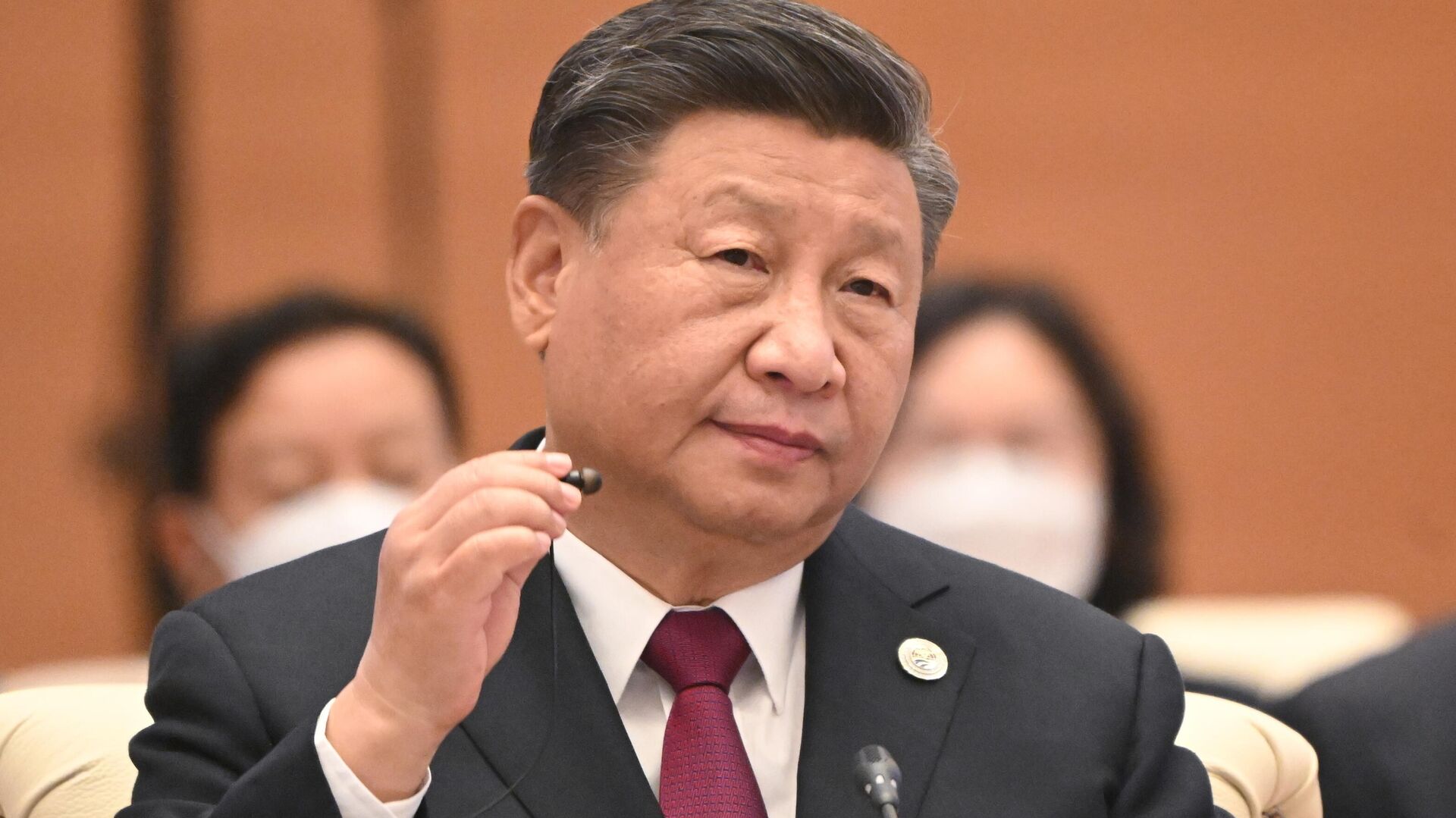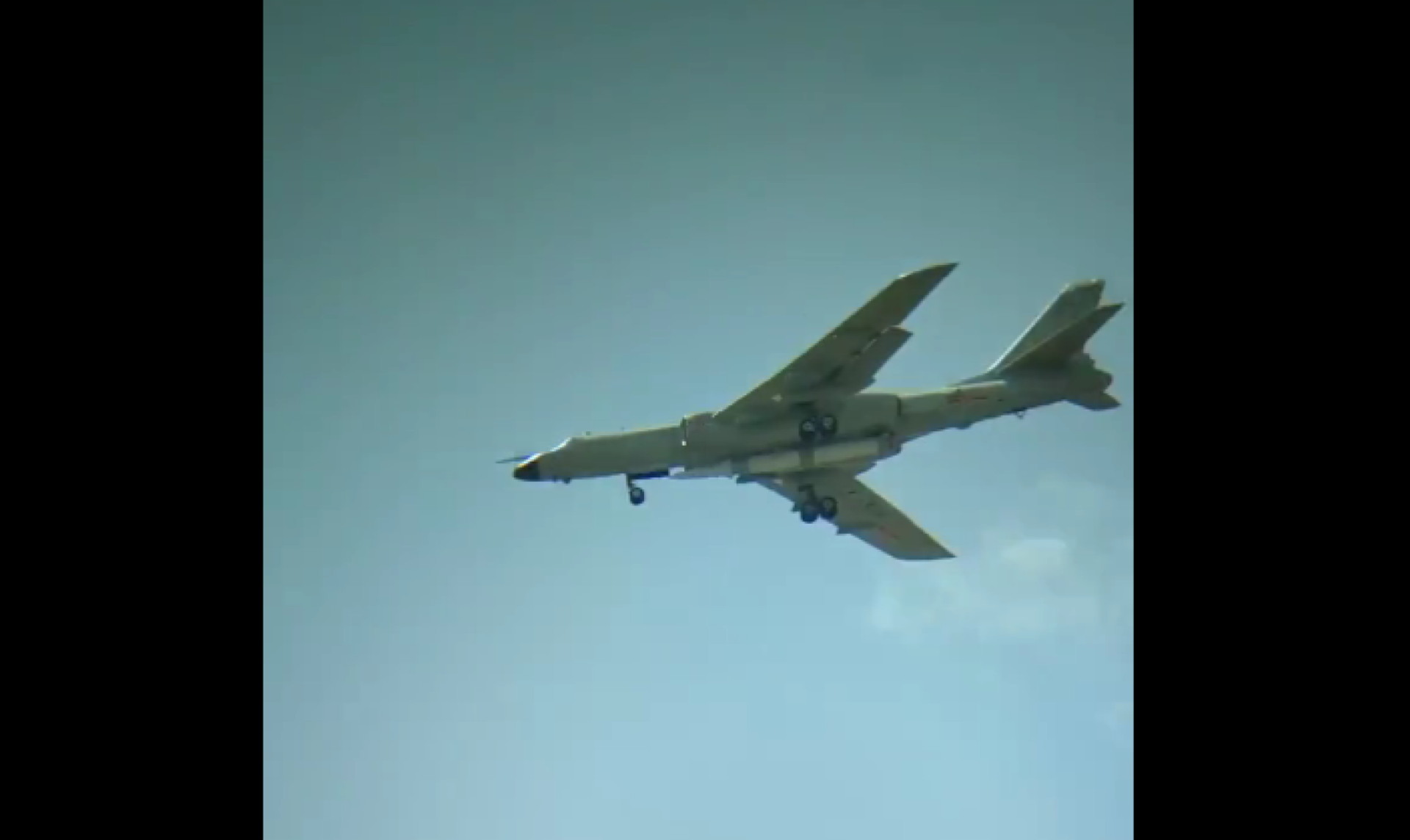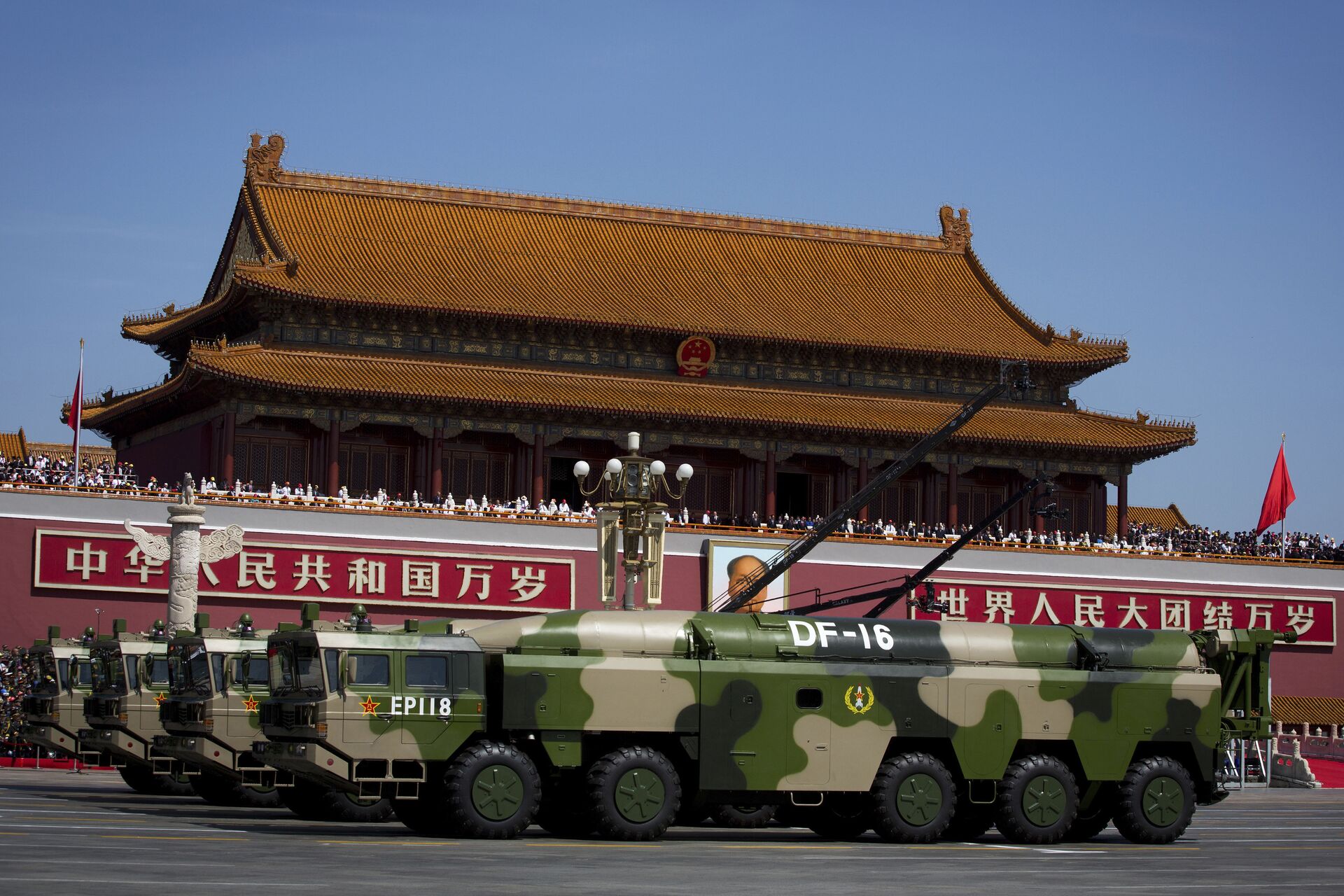Xi Tells 20th Party Congress China Needs to Boost ‘Strategic Deterrence’ Amid Nuclear Buildup

© Sputnik / Sergei Guneyev
/ Subscribe
Alongside India, China is one of two nations to maintain a “no first use” policy regarding nuclear weapons. The country largely dodged the massive nuclear buildup of the Cold War, having already broken with the Soviet Union by the time it became a nuclear power and orienting itself toward non-alignment.
In his opening speech at the 20th Congress of the Communist Party of China, Chinese President Xi Jinping called for the People’s Liberation Army (PLA) to increase its deterrence capabilities in the face of new threats.
“Achieving the goals for the centenary of the People’s Liberation Army in 2027 and more quickly elevating our people’s armed forces to world-class standards are strategic tasks for building a modern socialist country in all respects,” Xi said.
“To this end, we must apply the thinking on strengthening the military for the new era, implement the military strategy for the new era, and maintain the Party’s absolute leadership over the people’s armed forces.”
Xi noted that the PLA would “continue integrated development of the military through mechanization, informatization, and the application of smart technologies and work faster to modernize military theory, organizational forms, personnel, and weaponry and equipment.”
“We will establish a strong system of strategic deterrence, increase the proportion of new-domain forces with new combat capabilities, speed up the development of unmanned, intelligent combat capabilities, and promote coordinated development and the application of the network information system,” he added.
The concept of “strategic deterrence” refers to a nation’s ability to pose a credible threat to an aggressor nation if attacked, sufficient to convince them that the costs of an attack would be too high. It is closely related to “second strike capability,” or the ability of a nation, through a diversified and largely hidden nuclear weapons arsenal, to guarantee its ability to respond to an attempted “decapitation” first strike by a nuclear-armed aggressor.
Minimum Strategic Deterrent
Since detonating its first nuclear weapons test at Lop Nur in 1964, China has maintained a “no first use” policy regarding the destructive weapons - just one of two nations in the world with such a policy, with the other being India. Since then it has maintained a small arsenal of less than 300 nuclear weapons, mostly based in mobile ballistic missile launchers mounted on trucks or railcars, sufficient to establish a minimum strategic deterrent.
By comparison, the US maintains more than 5,428 nuclear warheads and Russia 5,977 warheads, mostly a legacy of the Cold War arms race, according to the Stockholm International Peace Research Institute (SIPRI). The other half-dozen nuclear powers maintain between several dozen and several hundred each.
Song Zhongping, a former People’s Liberation Army instructor, told the South China Morning Post (SCMP) on Tuesday that Xi’s statement meant the PLA would “strengthen its development of strategic nuclear forces,” including its nuclear triad composed of ballistic missile submarines, intercontinental ballistic missiles (ICBMs), and air-launched ballistic missiles.
“All of these require the PLA to have a modern nuclear-armed force … and to moderately increase the nuclear arsenal,” he said.
However, Zhao Tong, a senior fellow at the Carnegie-Tsinghua Centre for Global Policy in Beijing, told the Hong Kong-based paper that Xi’s comments proved China’s policy of “a traditionally small nuclear arsenal and a very modest, self-restrained nuclear posture” had “become history now.”

A Chinese Xi'an H6-N bomber carrying a ballistic missile believed to have hypersonic capability
Opposition to China’s Rise
A November 2021 Pentagon report to the US Congress on Chinese military power claimed that Beijing sought to increase its nuclear arsenal to 700 warheads by 2027 and 1,000 warheads by 2030. This rapid expansion was set in motion ahead of the 2020 elections in the United States, motivated by fears that then-US President Donald Trump, whose administration had seriously ramped up tensions with China by labeling it a “malign actor,” would attempt to start a war with China in an attempt to stay in power.
The fear was so great that all Chinese commands were put on the highest alert in the weeks before the election, prompting Pentagon leaders to reach out to their counterparts in the Chinese senior brass to reassure them that no, Trump was not about to launch an attack.
Bizarrely, the report goes on to claim that China is showing a “greater willingness to confront the United States” based on a belief “that the United States seeks to prevent China’s rejuvenation,” referring to the East Asian country’s continued recovery in terms of economic, social, and political prestige from the “Century of Humiliation” that accompanied China’s domination by European imperialists and Imperial Japan.
In Chinese historiography, that period is said to have ended with the socialist revolution in 1949. Xi’s administration has set a goal of China becoming “a modern socialist country that is prosperous, strong, democratic, culturally advanced and harmonious” by 2049 - the centenary of the revolution.


